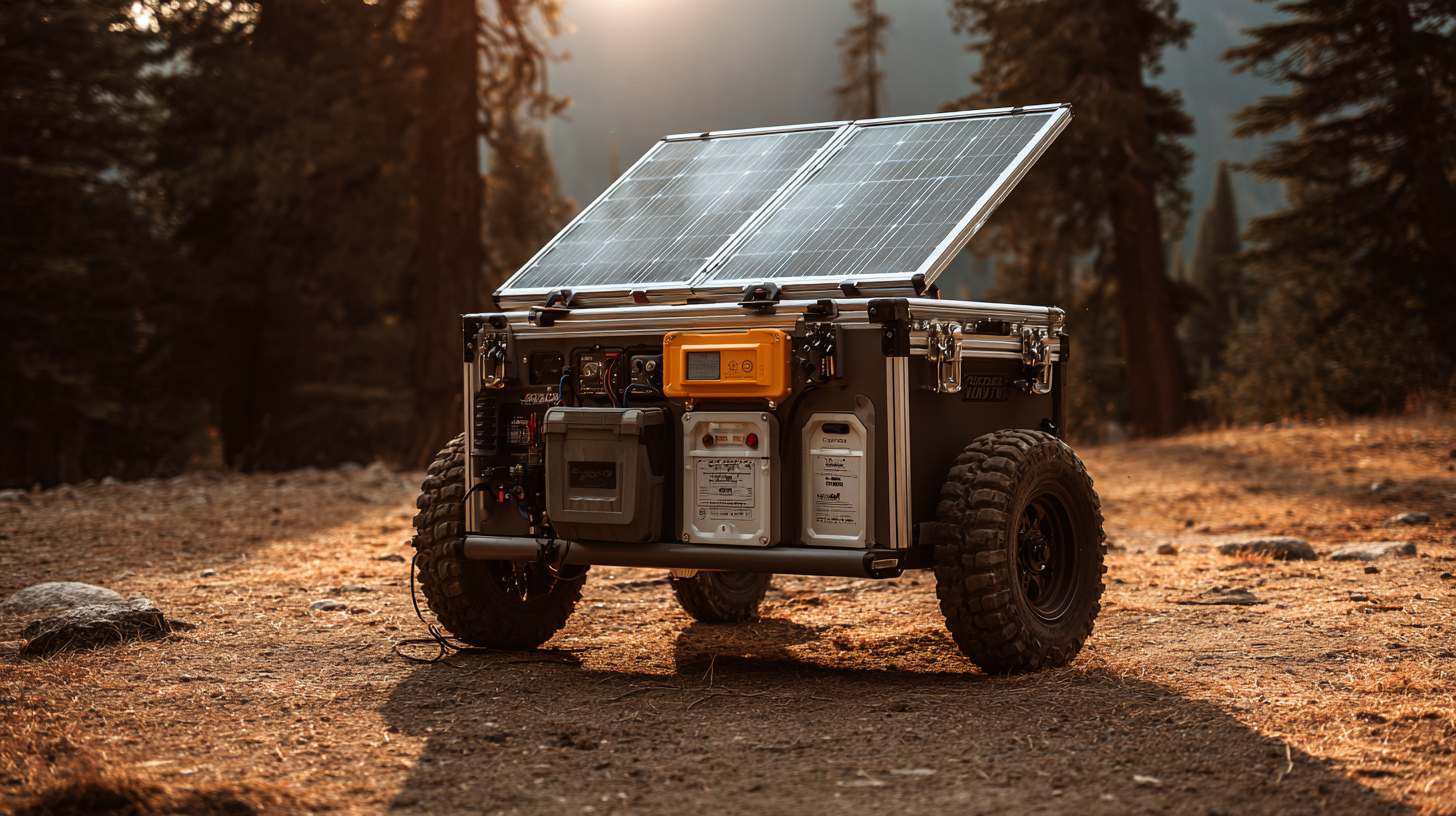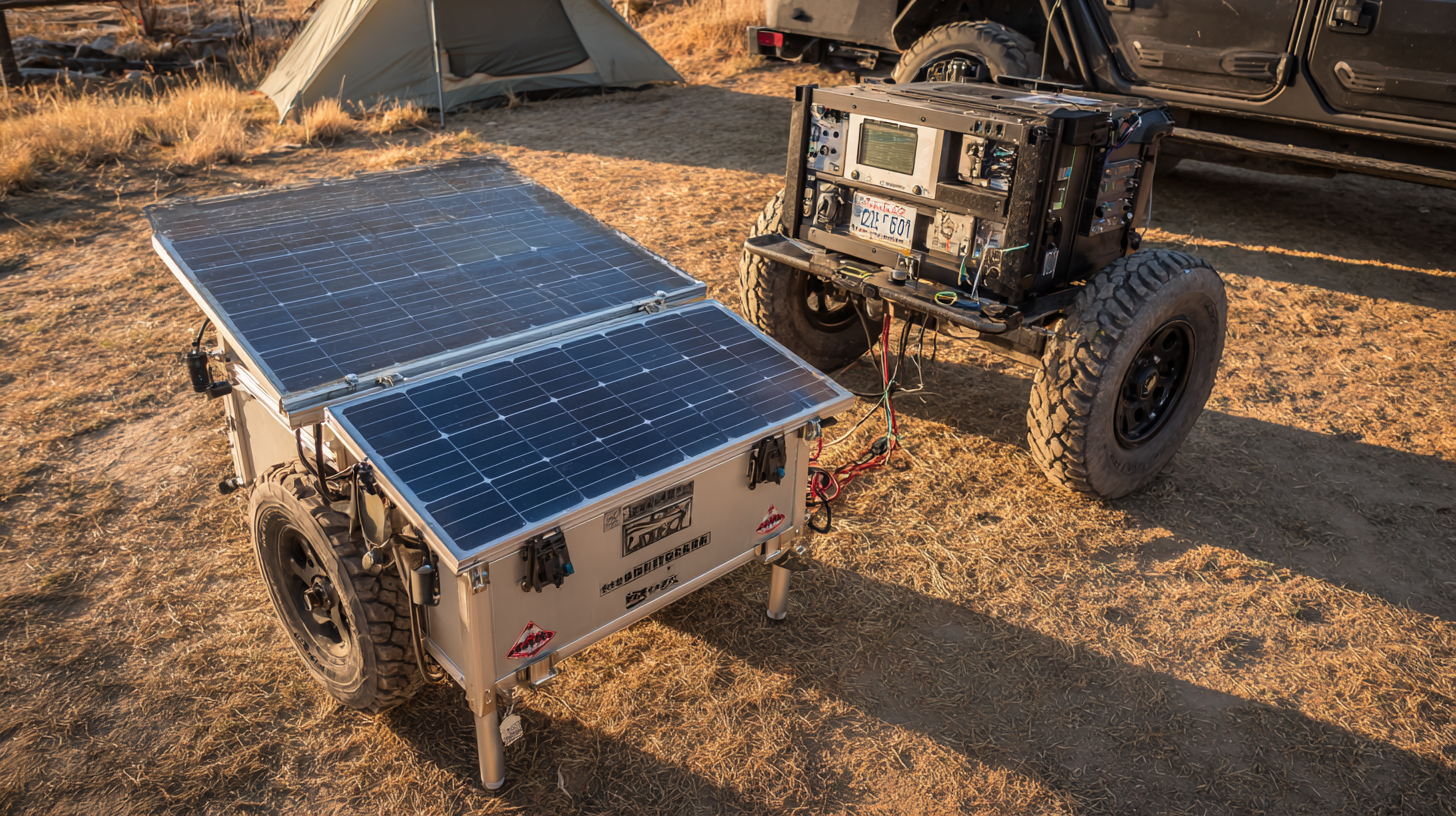MH Energy Your Better Solar and Energy Partner
Leave Your Message
MH Energy Your Better Solar and Energy Partner
When it comes to outdoor adventures, emergency preparedness, or simply reducing your carbon footprint, a Portable Solar Generator can be an invaluable asset. As the demand for renewable energy solutions grows, choosing the right portable solar generator tailored to your specific needs can be a daunting task. With a plethora of options available on the market, figuring out which features matter most, from power capacity and charging speed to portability and price, is essential. This ultimate checklist serves as a comprehensive guide, covering all the top strategies for selecting the perfect solar generator that will not only meet your energy needs but also align with your lifestyle. Whether you're planning a camping trip, preparing for a power outage, or looking to power small appliances sustainably, understanding these key factors will ensure you make a well-informed decision that enhances your energy independence and convenience.

When selecting the right portable solar generator, understanding your power needs is crucial. Assessing energy consumption involves determining the wattage of the devices you intend to run. For instance, a standard household may require a generator with a capacity sufficient to handle its appliances: a refrigerator might consume around 150-300 watts, while a microwave can draw 600-1200 watts. With the global push towards renewable energy, portable solar generators are increasingly becoming a viable solution, especially as the market for such technologies expands. The global market for heat pump water heaters is projected to reach $2.24 billion in 2024, signaling a significant shift towards sustainable energy consumption methods.
Furthermore, the energy consumption of larger vessels, exemplified by a single container ship which can demand as much green energy as approximately 139,000 households annually, highlights the growing importance of efficient power management. With advancements in virtual battery systems, optimizing energy across homes and businesses has never been more critical. These systems not only enable better self-consumption of renewable energy but also play a pivotal role in transitioning towards a more sustainable energy landscape. As the call for zero-carbon initiatives intensifies, ensuring your portable solar generator matches your energy requirements is instrumental in maximizing usage and efficiency.
This chart illustrates the wattage consumption of various devices commonly powered by portable solar generators. Understanding these consumption values is vital for selecting a generator that meets your energy needs.
When selecting a portable solar generator, three key features—capacity, portability, and durability—should guide your decision-making process. Capacity is crucial, as it determines how much power you can generate and store. Assess your power needs by considering the devices you plan to charge or use. Generators come with varying wattage outputs, so choose one that can efficiently support your appliances, especially during critical situations like camping trips or emergencies.
Portability is another important factor, especially if you intend to transport your generator frequently. Look for models that are lightweight and easy to carry, with ergonomic handles for added convenience. Additionally, consider the size of the solar panels included; foldable designs are ideal for saving space and making setup quicker. Lastly, durability should not be overlooked. A robust construction with weather-resistant materials will ensure your generator withstands the elements and lasts for years, giving you peace of mind wherever your adventures take you.

When selecting a portable solar generator, understanding the various models and technologies available is crucial. Portable solar generators primarily fall into three categories: traditional solar generators, solar battery generators, and hybrid models. Traditional solar generators use solar panels to directly convert sunlight into electricity, making them ideal for outdoor activities and emergency power needs. According to a report by MarketsandMarkets, the global solar generator market is expected to grow at a CAGR of 20.2% from 2021 to 2026, reflecting the increasing demand for renewable energy solutions.
Solar battery generators, on the other hand, store energy generated from solar panels or grid power. These models are increasingly popular for residential use, providing a reliable backup during power outages. A study from the International Renewable Energy Agency (IRENA) indicates that battery storage capacity is set to reach 1,000 GWh by 2030, promoting the shift toward sustainable energy systems. Hybrid models combine features of both traditional and battery generators, offering flexibility for various use cases.
Tips: When choosing a portable solar generator, assess your power needs by calculating the wattage required for your devices. Additionally, consider the charging options available, as some models offer faster recharging capabilities. Lastly, prioritize weight and portability if you plan to use the generator in remote locations, ensuring it's easy to transport and set up.

When considering the purchase of a portable solar generator, budgeting is essential to ensure you get the best value for your needs. According to a report by the National Renewable Energy Laboratory (NREL), the average cost of portable solar generators can range from $300 to over $2,500, depending on the capacity and features. A critical factor in your decision-making process should be how much power you need—smaller units may suffice for light usage, but for heavier applications such as RV camping or emergency preparedness, investing in a higher capacity model can lead to long-term savings.
Additionally, consider the longevity and efficiency ratings of the solar panels used in the generators. Studies indicate that premium models often incorporate monocrystalline technology, which offers an efficiency of 15-22%, compared to 10-18% for polycrystalline options. While these advanced models may have a higher upfront cost, their efficiency translates into generating more energy over time, thereby enhancing their value. Therefore, a thorough assessment of both initial costs and ongoing performance is critical to ensure you make a financially savvy choice aligned with your power needs.
| Feature | Importance Level | Estimated Cost ($) | Value for Money Rating (1-5) |
|---|---|---|---|
| Wattage Output | High | 400 | 4 |
| Battery Capacity (Wh) | High | 600 | 5 |
| Weight (lbs) | Medium | 200 | 3 |
| Port Availability | High | 150 | 4 |
| Solar Input Options | Medium | 100 | 3 |
| Durability Rating | High | 50 | 5 |
| Average Runtime (hrs) | Medium | 300 | 4 |
When selecting a portable solar generator, brand reputation is paramount. A reputable manufacturer not only suggests a level of reliability but also signifies a commitment to quality. Researching potential brands involves examining their history, customer reviews, and overall market presence. Look for brands with a track record of positive feedback and longevity in the solar energy sector. This can often be assessed through customer experiences shared on various forums and social media platforms, providing invaluable insight into the real-world performance of their products.
Furthermore, trustworthiness can be gauged through a company's transparency about its manufacturing processes, warranties, and customer service policies. Brands that openly share information about their solar technology, sourcing of materials, and support services tend to inspire more confidence. Engaging with the community, attending expos, or exploring trade shows can further solidify your understanding of a brand's reputation, allowing you to make an informed decision that aligns with your specific needs. By prioritizing reputable manufacturers, you can ensure that your investment in a portable solar generator will be met with quality performance and dependable customer support.
